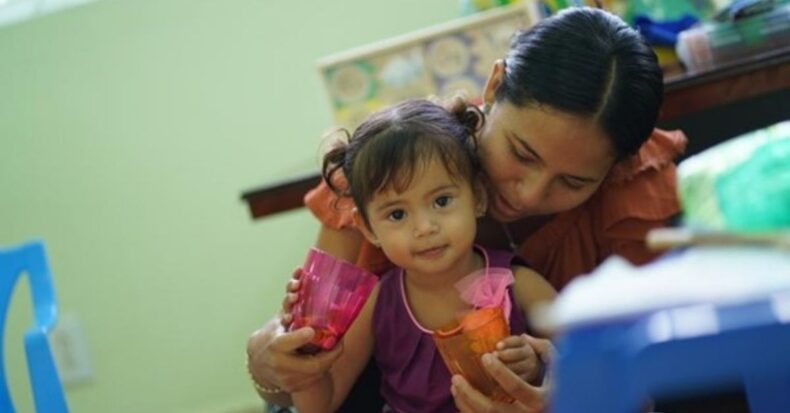A significant impact on psychology and mental health due to COVID-19 on Kids and Youngsters.
COVID-19 is expected to significantly impact the psychology and mental health, and it may affect a disproportionate number of people, with adolescents being the most vulnerable group. We wanted to see how COVID-19 affected the mental health of adolescents.
There are more than 2.2 billion children globally, accounting for roughly 28% of the global population. Sixteen percent of the world’s population is between the ages of 10 and 19. (UNICEF, 2019).
COVID-19 has had a profound impact on people’s lives all over the world, particularly children and adolescents. Isolation and social distancing strategies have been used worldwide to protect against the risk of COVID-19 infection (Shen et al., 2020).
On these grounds, various countries have been implementing regional and national containment measures or lockdowns since January 2020. In this context, closing schools, educational institutes, and activity areas were one of the most important measures taken during the lockdown.
These unavoidable circumstances, which are out of the ordinary, cause stress, anxiety, and a sense of helplessness in everyone.
It has been suggested that, in comparison to adults, this pandemic may have longer-term negative consequences for children and adolescents. Many vulnerability factors, such as developmental age, current educational status, special needs, pre-existing mental health conditions, economic disadvantage, and child/parent being quarantined due to infection or fear of disease, influence the nature and extent of the impact on this age group.
The sections that follow discuss the findings of studies on the mental health aspects of children and adolescents affected by the COVID-19 pandemic and lockdowns that have been implemented at national or regional levels to prevent further infection spread.
Methods and materials:
From January to June 2020, the electronic databases of MEDLINE used PubMed, Cochrane Library, Science-direct, and Google Scholar. The MeSH or accessible text terms and Boolean operators for PubMed to conduct the search.
This search strategy and terms were adjusted as needed for other databases. Five independent reviewers conducted the searches. To gather information about the relevant studies, a manual search of the references of the related articles was also conducted.
Only 12 results were found when searching PubMed for “COVID-19 in children.” Only four of these articles were about the “psychological effects of COVID in children.” As a result, we included studies that reported on the effect of COVID1-19 on older children and the impact of COVID1-19 on their lives to make the review more comprehensive and informative.
This was done while considering the various terminology used to explain the “Children and COVID-19” phenomena. On search yielded 112 items after employing the approach described above. Only peer-reviewed works published in English were considered. Due to the likelihood of insufficient information, grey literature such as conference proceedings were not included.
Case studies and review papers were included, as well as WHO (World Health Organization), APA (American Psychiatric Association), NHS (National Health Services), and the Ministry of Health of the Government of India.
They chose 22 items to add based on the criteria, and three independent writers were involved in the research selection process, and all authors agreed on the papers to be included. The effect estimates or assesses the risk of bias for included publications because this was a narrative review.
Effects on young children:
Even before a kid is born, stress has a harmful influence on them. Parents, particularly pregnant moms, are psychologically prone to anxiety and depression during times of stress, which is scientifically connected to the fetus’s well-being. Pandemics and lockdown have a more substantial influence on emotional and social development in young children and adolescents than in adults.
Younger children (3-6 years old) were shown to be more likely than older children to exhibit signs of clinginess and dread of family members being sick in one of the earliest studies conducted during the ongoing epidemic (6-18 years old).
On the other hand, the older youngsters were more prone to inattention and were constantly questioning about COVID-19. Despite this, all children had severe psychological disorders such as increased irritability, inattention, and clinging behavior regardless of their age groups.
Effects on school and college children:
According to research, older adolescents and teens are concerned about canceling exams, exchange programs, and academic activities. According to current COVID-19 research, school closures in isolation save roughly 2-4 percent additional fatalities, which is a small number compared to other social distancing techniques.
Furthermore, they advise policymakers that schools should use less disruptive social distancing measures if the social distance is suggested for a lengthy time. However, given the current climate, it is debatable whether total school and college shut down for an extended period are necessary.
It’s been suggested that panic buying during times of stress is an instinctive survival response). Hoarding behavior among youngsters has increased throughout the current epidemic period. It has also been discovered that among adolescents, social distance is primarily perceived as a social obligation. It is more genuinely followed if driven by prosocial objectives such as preventing others from being ill.
Furthermore, children’s increasing usage of the internet and social media due to their more extended confinement at home predisposes them to use the internet obsessively, access unpleasant information and increases their sensitivity to being bullied or mistreated.
Developing ways to improve children and adolescents’ access to mental health care both during and beyond the present crisis. This will necessitate a direct and digital collaboration network of many parties.
The role of parents, teachers, physicians, community volunteers, the health system, and policymakers in safeguarding the mental well-being of children and adolescents during the COVID-19 epidemic and lockdown is being explored.













